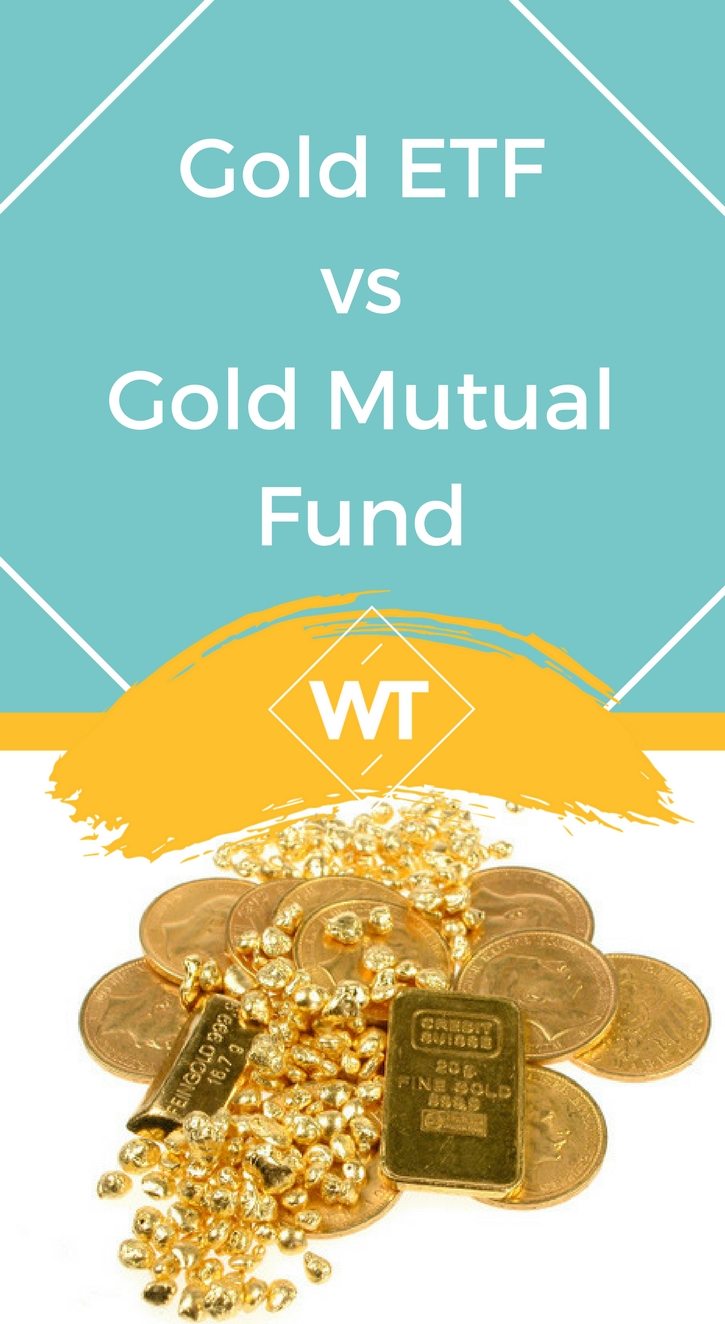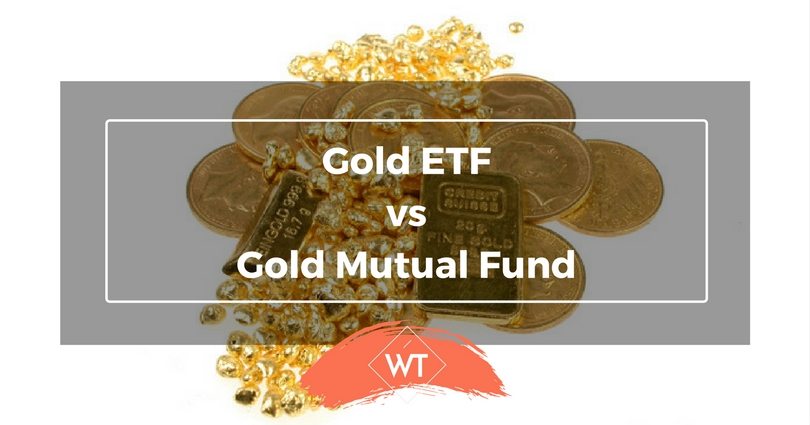Gold ETF vs Gold Mutual Fund

Gold has emerged as an important asset class in every portfolio given its ability to grow with inflation and protect the portfolio from volatility caused due to economic and financial crisis.
Gold is not correlated with financial markets and generally shares an inverse relationship with the US dollar. This is one of the reasons why Gold managed to reach its all time highs despite the financial crisis in developed economies and across the world.
How to invest in Gold?
What is the best way to invest in Gold? It is well established that physical gold is only suited for ornamental applications and does not suit investment needs.
The preferred route to invest is through Gold exchange traded funds and gold mutual funds. Investing in these funds relieves individuals from the time, effort and costs involved in storage, safety, making charges, margin losses, etc that are typical in case of physical gold.
Let us compare both and explore the pros and cons of investing in Gold ETF and Gold mutual funds.
1. Pricing
ETF:
Gold ETF is priced based on international gold prices, which are generally quoted in $ per ounce. However, each unit represents the price of one gram of gold in rupees. The price of one unit is influenced by international prices and currency rates. When you invest in Gold ETF you are investing in Gold of high quality (99.5% purity) which is priced transparently and listed on a stock exchange.
MF:
Gold MF invests in gold mining and refining companies. The pricing is based on the value of its portfolio of investments in gold exploration companies. Although this has a relation to gold prices, the value of the portfolio is dependant on the performance of the companies in it and their business value. Hence price of a unit is linked to portfolio value and growth just like equity funds which invest in listed companies.
Pros and Cons:
If you are looking at investing in gold as such then Gold ETF is a better option. If you are looking at investing in gold mining, exploration, etc then Gold MF is better. Gold ETF closely tracks the price of gold so you can sell when prices appreciate, but Gold MF is just another equity fund which specializes in Gold sector.
2. Mode of Investment
ETF:
A demat account with a registered broker would be required to invest in Gold ETF. This is not a major deterrent because today access to online trading has been able to reach smaller towns as well.
MF:
Here one can invest in the funds without a demat account. This is easy and convenient for people who don’t have access to a demat or trading account.
3. Systematic Investment Plans
ETF:
This is currently not available. However, one can invest by buying smaller quantities when prices are low. Interestingly, for investors with a long term perspective averaging by buying gradually at lower prices works pretty well. Flexibility to buy and sell anytime (any day or intraday) helps in efficient portfolio rebalancing.
MF:
An SIP option helps investors to invest systematically but unfortunately you are not investing in the gold metal, but in gold companies. However, you still get the benefits of rupee cost averaging in gold mutual funds.
4. Liquidity
ETF:
Listed on stock exchanges and can be sold intra day on the exchange itself. You can receive funds in a couple of working days. The pricing is as per the price on the exchange, which will be adjusted for brokerage and other charges.
If the Gold ETF trades at Rs.2200 and you sell 5 grams, you will get an amount which is equal to (Rs.11,000 before transaction Charges). One can take advantage of intra-day volatility in gold prices in this case when prices move significantly.
MF:
Here you can redeem your money from the fund itself and get access to funds in a couple of days. But the price is based on recent closing Net Asset Value (NAV). If you hold 100 units of a fund and its NAV is Rs.101 you will get (Rs.101 X 100) – Exit Load/Charges as applicable. (illustrative). An investor may not be able to take advantage of volatility in gold prices because these may not move in tandem with gold prices.
5. Transaction Costs
ETF:
The costs in this case would be brokerage and demat costs. This can become high if one resorts to frequent trading. However, for investors this is cost effective. Of course one has to bear the annual demat charges, but this is not a constraint for people who already have a demat account and invest in stocks.
MF:
The costs here include exit loads of 1% or higher depending on the fund.
6. Fund Expenses
ETF:
The fund is basically passive in nature and does not actively manage its investments. So the need for a professional team, research and efforts involved in identifying investment opportunities is done away with. The fund just maintains a portfolio of gold with a custodian in line with the net fund inflows.
MF:
The fund incurs costs related to research, salaries, etc as professional skills and talent needs to be deployed to identify investment opportunities.









Leave a Reply